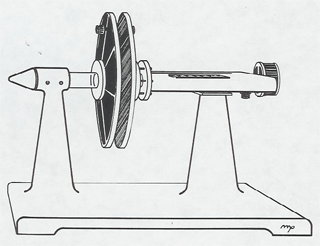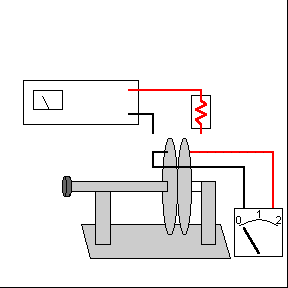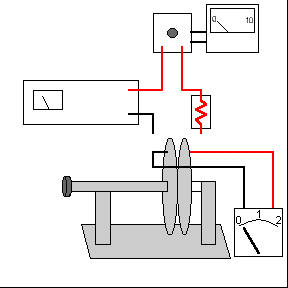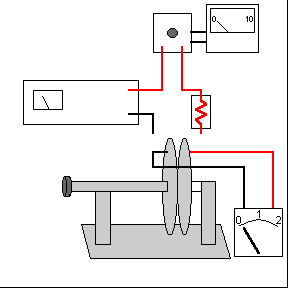- 1. Mechanics
- 2. Harmonic Motion, Waves and Sound
- 3. Matter and Thermodynamics
- 4. Electricity and Magnetism
- 5. Light and Optics
- 6. Modern Physics
- 7. Astronomy
- 8. Software and Multimedia
- 9. Index and code conversion from older manual
- External Resources
70. Parallel Plate Capacitor
A parallel plate capacitor has variable plate separation.

Some interesting demonstrations are:
a. The capacitor is connected to an electrostatic voltmeter. It is charged to one thousand volts with a high voltage supply. (The high voltage supply is in series with a lOOMohm resistor so its leads are safe to handle. The capacitor will be discharged in an instant if you put your fingers across the plates. Nothing will be felt; the stored charge Q with this capacitor is too small to make an appreciable current.) With the capacitor charged and disconnected from the power supply, the plate separation is now increased. Ask your students whether the voltage across the capacitor as shown by the electrostatic voltmeter will increase, decrease, or remain the same. Similarly, with the capacitor charged and disconnected from the power supply, a dielectric is thrust between the plates. Will the voltage increase, decrease, or remain the same?
 |
 |
b. A measuring amplifier can be inserted into the charging circuit from the high voltage power supply. Even after the capacitor is charged a slight leakage current will be noted. You can grasp the plates with your fingers, and the additional current flowing through your hand (protected by the l00Mohm resistor) will be noted on the meter. If the plate separation is increased, additional current will flow in to increase Q. A dielectric thrust in produces similar results.
 |
 |
